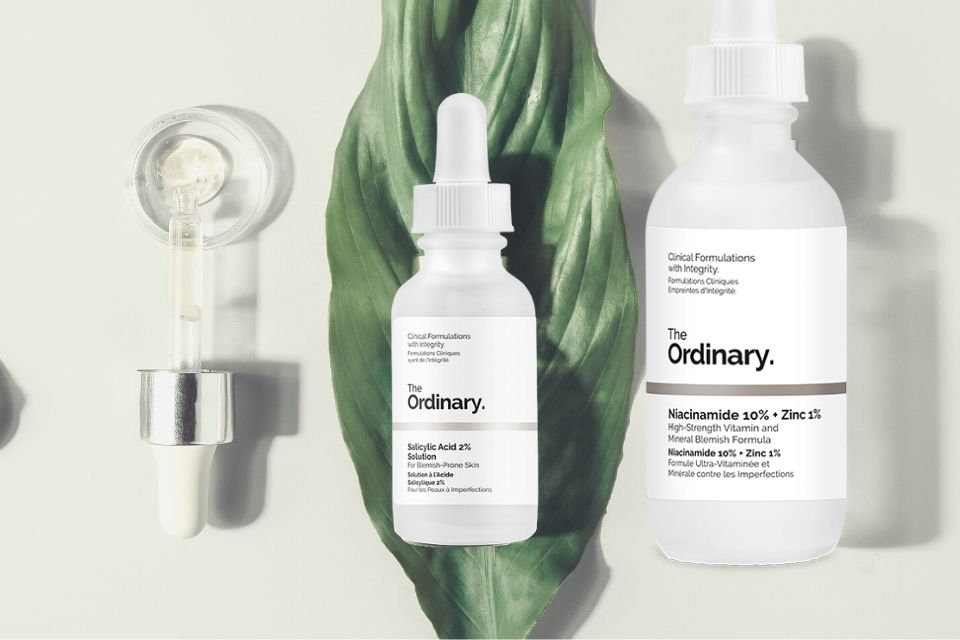When combining skincare ingredients, the general rule is to consider the pH levels of the products and how the active ingredients interact. An imbalance can cause more harm to your skin than you might expect.
Fortunately, Niacinamide is completely safe to use with Salicylic Acid due to its humectant properties. This ingredient helps draw moisture from the surrounding environment and other products, locking it into the skin’s layers. Another benefit of Niacinamide is its ability to regulate sebum production, making it highly effective for acne-prone skin. With Salicylic Acid being one of the most popular BHAs in acne-fighting products, pairing these two powerhouse ingredients is a great choice.
Today, we’ll delve into the formulations of specific products and how they affect your skin. Let’s explore whether using a Salicylic Acid cleanser and Niacinamide together is effective.
Can You Use Niacinamide with a Salicylic Acid Cleanser?
Absolutely! Although Salicylic Acid is a potent skincare ingredient, it can cause dryness and irritation when you first introduce it to your routine. If you’re new to using Salicylic Acid, starting with a cleanser is an excellent way to ease in, as these products typically have lower concentrations and don’t stay on the skin for long.
A Salicylic Acid cleanser helps remove dead skin cells, bacteria, and impurities, keeping your skin clean and prepped. This also ensures that other products, like those containing Niacinamide, can penetrate the skin quickly and effectively.
Can You Use a Salicylic Acid Cleanser with a Serum?
Yes, you can, but this depends on the serum’s formula. Since Salicylic Acid is a strong ingredient, it’s best to avoid pairing it with other acids, such as Glycolic or Lactic Acid. However, combining a Salicylic Acid cleanser with a serum enriched with Hyaluronic Acid provides hydration and helps counteract any dryness caused by the BHA.
This combination is beneficial for oily and acne-prone skin types. For those with drier skin, it allows you to enjoy the benefits of Salicylic Acid without unwanted irritation.
Which Comes First, Salicylic Acid or Niacinamide?
When layering Salicylic Acid and Niacinamide, it’s important to give your skin enough time between applications. This is to maintain the skin’s pH balance. As Salicylic Acid is acidic, apply it first and wait 10-15 minutes before following with Niacinamide. Niacinamide works best in a neutral pH environment, so allowing time between applications ensures optimal results for your skin.
If you want to learn more about how to use Niacinamide and Salicylic Acid together, check out our dedicated blog post.
DQH Can I use salicylic acid first and then vitamin C?
It’s easy to create a skincare routine, but knowing how to use it is another thing entirely. In most cases, if you’re not getting the desired skin results, it could be due to the layering of conflicting ingredients. So, is it possible that salicylic acid and vitamin C are such ingredients? Or are these active ingredients the duo that’s been missing from your skincare routine? If you want answers, stick around because today we are going to explain the benefits of salicylic acid and vitamin C and how they can be used in your daily life.
What are the benefits of salicylic acid for skin?
Salicylic acid is one of the most commonly used beta hydroxy acids and is favored by many people with oily, acne-prone skin. This acid is derived from willow bark, and unlike its water-soluble relatives (called alpha-hydroxy acids), salicylic acid is oil-soluble, which means it can penetrate deeper into the lower layers of the skin. Once it reaches the lower layers, it can help unclog pores of excess sebum, dirt, bacteria, debris, and impurities. This results in clearer skin tones and greater definition.
Not only does salicylic acid benefit the underlying layers, but the outer surface of the skin benefits as well. When applied to the skin, salicylic acid removes the buildup of dead skin cells. This is accomplished by breaking the bonds that hold dead cells to the surface. Over time, this can cause the complexion to look dull and prone to acne, blackheads, and other blemishes.
If you’d like to learn more about salicylic acid and how it can improve your skin, check out this dedicated blog post from a beauty insider.
What are the benefits of vitamin C for skin?
Vitamin C is considered one of the most powerful antioxidants, which means it is very effective at fighting free radicals and preventing them from causing further skin damage. Examples of free radicals include pollution, central heating, UV rays and harsh climate. They attack proteins, fats and cell membranes as soon as they come into contact with the skin, causing signs of premature aging such as fine lines and wrinkles as well as hyperpigmentation, flaky patches of skin and loss of elasticity.
Many people usually prefer to use vitamin C in their morning routine as this ingredient gives the complexion a radiant glow. You’ll also find that vitamin C can target areas of hyperpigmentation, plumping the skin and reducing the appearance of fine lines and wrinkles.
The thing about vitamin C is that there are a lot of outdated studies going back to the 1950s that describe vitamin C as an unstable skin component. Thanks to improvements in modern technology, this is no longer the case as all products now contain a stable form of vitamin C.
Visit The Beauty Insider to learn more about vitamin C. So please check out our blog post.
Can I use salicylic acid first and then vitamin C?
Yes, you absolutely can. In fact, it’s thought that using salicylic acid before using vitamin C ensures it penetrates faster and works faster.
This is an efficient way to utilize two power sources, and the reason has to do with pH. For example, the skin’s natural pH is about 4.7, making it slightly acidic. Salicylic acid and vitamin C are also both acidic, and you’ll find that vitamin C is absorbed quickly into the skin. Therefore, using salicylic acid beforehand can increase the acidity of the skin and allow vitamin C to penetrate into the skin faster.
While this is considered an effective way to combine two powerful ingredients, you need to be aware of your skin type and how it reacts to certain active ingredients. Even people with perfect, normal skin can experience skin sensitivity and irritation. Therefore, always consult a doctor or dermatologist before using any new products on your skin.
It’s also important to follow skin application rules. In this case, you need to use the product correctly to ensure you get the best results for your skin. If you’re not sure what I mean, the basic rule for skin is to start with the thinnest consistency and work your way up to the thickest consistency. This prevents a barrier from forming on the surface, preventing other active ingredients from penetrating the skin.
Can I use salicylic acid at night and vitamin C in the morning?
Yes, absolutely, this is considered the most effective way to get returns without any adverse side effects. This is because there is enough time between applications to ensure that the skin’s pH levels return to balance.
You’ll also find that Vitamin C is rich in antioxidants and is perfect for use in the morning to ensure your skin is protected and looking its healthiest. Due to the small size of salicylic acid molecules, it is an acid that is able to reach the deepest parts of the skin. While this is effective at keeping skin clear, it also increases the risk of irritation and photosensitivity. Therefore, many people prefer to use powerful BHAs in their evening routine without exposure to UV rays, pollution, or harsh weather.
Warning: If you avoid using sunscreen every day, none of these ingredients will do what your skin needs. The combination of chemical peels and powerful ingredients increases the risk of further damage to the skin’s surface. Use SPF 50 every day to keep your skin protected and your lipid barrier healthy, even on cloudy days, keeping your skin in top condition.



